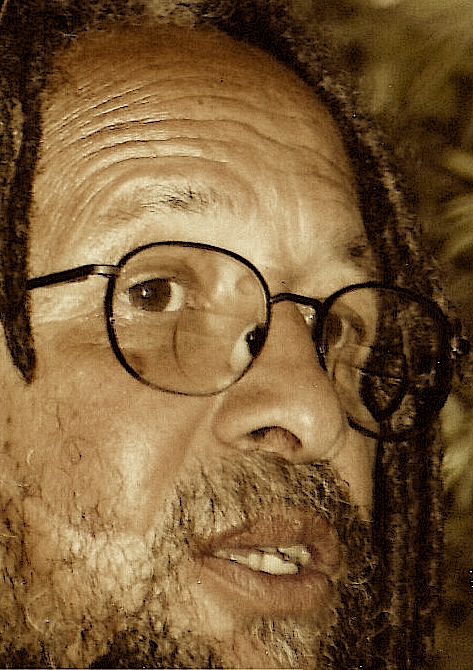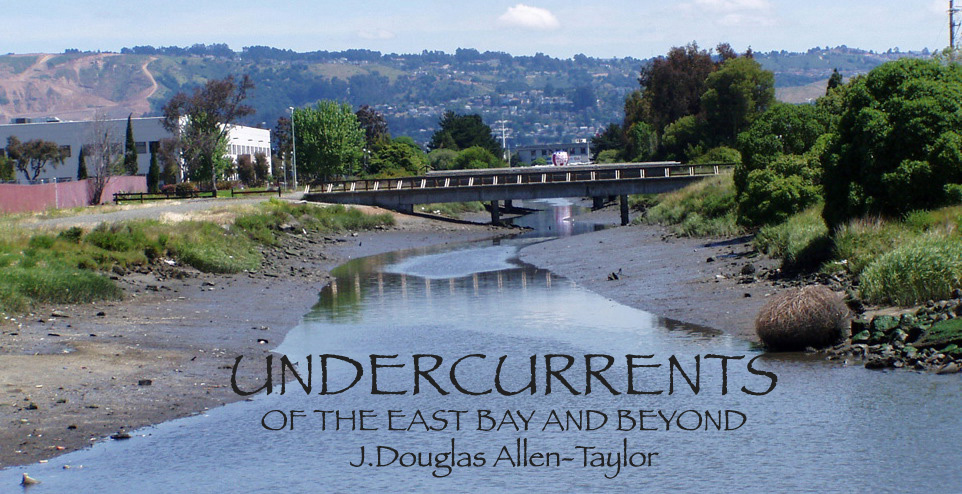|
|
ON THE DAY THE OFFICERS DIED, WHAT DID THE POLICE COMMANDERS DO?
May 28, 2009
We are so easily distracted, aren’t we, so often allowing the trivial and the unimportant to take the center stage of our attention while serious issues are left unattended on the outer wings of our collective consciousness, often to die without even a comment.
And when that happens, and the solutions to the most serious of our problems go unexplored, the problems themselves left to fester and grow, who do we have to blame except ourselves, my friends?
In the afternoon of March 21 of this year, a young man named Lovelle Mixon shot and killed two Oakland motorcycle officers during a traffic stop in the East Oakland foothills, and then later shot and killed two Oakland SWAT officers—and was killed himself—in the shootout that occurred when a SWAT team stormed the apartment where Mr. Mixon was hiding.
In the immediate aftermath of the violent death of five men in an East Oakland neighborhood in the space of two hours—four of them police officers—there are a number of serious questions that we might have pursued. Why are some parts of Oakland so violent? Why was Lovelle Mixon considered a folk hero in some parts of the city and, as Joseph Anderson wrote in an April 2 Daily Planet reader commentary, his killing of four police officers “karmic justice” (“The ‘Karmic Justice’ Of Lovelle Mixon’s Act)? What is actually happening between police and young African-American people in the mean streets of Oakland that might have led to the events of March 21? And, finally, was there anything in the training, attitude, performance, or command within the Oakland Police Department itself that might have led to the four police officers’ deaths, the question not to place blame, but to determine if and where any police mistakes might have been made, the purpose to correct those mistakes so that similar mistakes—and similar police deaths—do not occur in the future?
All of these were legitimate questions, the kinds of questions adults sit down among themselves and discuss and resolve, in the wake of such a community trauma and tragedy.
We did not have such a discussion.
Instead, much time was spent condemning Mr. Anderson for his “karmic justice” sentiments, or KPFA commentator Cleveland Valrey Jr. (“JR”), who wrote in a March 24 BayView article (“Police 2, Oakland Residents 4”) that “Lovelle turned out to be a suicide sniper who used a gun instead of a bomb to take out enemies of the community.” While condemnation was fair—Mr. Anderson and Mr. Valrey, after all, had to know that their articles would be considered outrageous, and therefore cannot complain when some people are outraged—but the discussion left out the most pertinent fact that the Anderson and Valrey sentiments reflected the views coming out of many East Bay inner city neighborhoods. On the day after the March 21 shootings, I overheard two young African-American men at the Berkeley Flea Market referring to Mr. Mixon in terms of awe, saying that “he’s going to go down in history, man; took four cops down at once!” How widespread is that sentiment? I don’t know, but I suspect it is much wider—in these inner city neighborhoods—than many leaders and newspapers would like to think.
But more vacuous than the Anderson and Valrey condemnations—vacuous because they condemned these men’s words without much curiosity over why the words were written or where the sentiments came from—was the long imbroglio over what Oakland Mayor Dellums did on the day of the Mixon shootings.
As I wrote in an April 9 UnderCurrents column, this topic seemed to obsess many local journalists in the immediate aftermath of the shootings. San Francisco Chronicle political gossip columnists Philip Matier and Andrew Ross wrote in a March 29th column (“Mayor Dellums Persona Non Grata By Oakland Police”) that ”after the March 21 killings Dellums was a no-show for several hours, before finally holding a short press conference—while others, including state Attorney General and ex-Mayor Jerry Brown and East Oakland City Council members Larry Reid and Desley Brooks, spent hours with shell-shocked cops at police union headquarters.”
The Chronicle’s East Bay columnist, Chip Johnson wrote in a March 31 column that on the day of the shootings “Dellums arrived at the police officers' union hall five hours after the shooting. A council member said the mayor—by his own inaction—has become ‘irrelevant’ and of no use.” (“Dellums’ Presence As Risky As His Performance”).
And columnist Tammerlin Drummond, writing in the April 4 Contra Costa Times and Oakland Tribune (“Ron Dellums Didn’t Speak At Police Funeral For Fear He Would Botch Names”), said that “For several hours after the [March 21] shootings, Dellums was missing in action. He didn't show up at the police substation at Eastmont Mall—blocks from the scene of the first shooting—for a police briefing. Councilwoman Desley Brooks, D-Eastmont-Seminary—the shootings occurred in her district—was there. So was Councilman Larry Reid, D-Elmhurst-East Oakland, who represents the neighboring district. Nor did Dellums go to Highland Hospital where the wounded officers were taken for treatment. Or to any of the shooting scenes. The city's top elected official was nowhere to be found. Dellums did not surface until much later at the Oakland Police Officer's Association downtown where grieving, dazed officers had gathered along with city officials and a police chaplain. How on earth could Dellums have thought that monitoring a tragedy of this magnitude by telephone was the right thing to do?”
The drumbeat over “what did Dellums do?” on the day of the shootings got so loud that in the same April 9 column, I released an hour-by-hour timeline, compiled by the mayor’s staff, on what he actually did that day, detailing the extent of the mayor’s involvement. That should have settled the question.
But more important, I believe, was the question that wasn’t asked by most local columnists in the wake of the Lovelle Mixon police shootings. While our columnist friends seemed overly obsessed by the actions or purported inactions on March 21 of Mr. Dellums—who had no command authority over the police actions of that day—these same columnists seemed strangely incurious about the actions of the police officials who were running the show.
In a followup column the week after the April 9 column, I wrote “So one hopes that now they have taken what has become the obligatory run at the mayor, the … local columnists will use their considerable influence to help get answered two of the most important questions that surround the March 21st events: who gave the orders for the SWAT officers to storm the 74th Avenue apartment where Lovelle Mixon was hiding and why was that order given? It is those questions which lead to the most important question of that day, which is not what did Dellums do, but what caused the deaths of the two SWAT officers in the apartment shootout.”
I also suggested that the Public Safety Committee of the Oakland City Council—chaired by East Oakland Councilmember Larry Reid—convene a public investigation into the shootings to determine “whether the two SWAT officers, Mr. Sakai and Mr. Romans, lost their lives in the apartment on 74th Avenue because there was no reasonable alternative to storming the apartment, or whether it was either caused by an improper command decision, a lack of proper procedures or training, or a lack of proper command.”
Neither the my fellow local newspaper columnists nor Mr. Reid took me up on those suggestions. In the month and a half since the second column was written, they have been silent on the issue. But clearly, some rank and file members of the Oakland Police Department—and perhaps some in OPD leadership as well—were wondering the same things as I about what caused the SWAT officers’ deaths.
On May 12, the Oakland Tribune reported that “members of the Police Department's SWAT team have asked that the unit's commander be reassigned over concerns about his leadership abilities in the wake of the fatal shootings of two SWAT officers March 21, law enforcement sources said Tuesday.” (“Oakland SWAT Team Members Ask That Commander Be Reassigned”) The sources told Tribune reporters Harry Harris and Josh Richman that Captain Ed Tracey, who commanded both the SWAT squad and the OPD traffic unit, “chose to be at Highland Hospital, where two traffic officers had been taken after being mortally wounded by parolee Lovelle Mixon during a traffic stop, rather than commanding the operation that led to the raid on an East Oakland apartment during which Mixon and two SWAT officers were killed in a gunbattle.”
This week comes an even more explosive charge about police command responsibility on the day of the Mixon shootings.
In a May 27 Tribune article (“OPD Commanders Under Investigation In Case Where SWAT Sergeants Were Shot To Death”), we learn that Oakland police commanders are currently under internal investigation by the Oakland Police Department for their actions surrounding the shooting deaths of the two SWAT officers in the final Mixon shootout. The four commanders being investigated in addition to Mr. Tracey are Deputy Chief David Kozicki, Capt. Rick Orozco, Lt. Chris Mufarreh, and Lt. Drennon Lindsey.
The Tribune article, a joint effort by reporters Thomas Peele, Kelly Rayburn, and Bob Butler, reports that “critical information about the location of Lovelle Mixon, who already had fatally shot two motorcycle officers as the SWAT team assembled, didn't reach SWAT team leaders preparing to enter an apartment building where the gunman lay in wait with an assault rifle, officers said. No formal command post was set up from which the operation could be coordinated. … Commanders are being investigated on discrepancies in statements about how the search for Mixon unfolded…Deputy Chief David Kozicki, Capt. Rick Orozco and Lt. Chris Mufarreh are being investigated for the truthfulness of their statements about the events. … Lt. Drennon Lindsey is being investigated for issues involving her reporting and documentation of the events. Capt. Ed Tracey, the SWAT commander widely criticized for staying with the motorcycle officers at Highland Hospital rather than leading the search for Mixon, is being investigated for interfering with the initial internal affairs probe.”
This is major.
We now hope that Mr. Matier, Mr. Ross, Mr. Johnson, and Ms. Drummond pursue the question of what the police commanders did on the day of the shooting with the same zeal and fervor they pursued the question of what did Dellums do. And the Oakland City Council—which mourned the police deaths without using their oversight powers to determine why and how they died—will perhaps be goaded into joining the discussion, and the investigation.
We are so easily distracted by the trivial. But now that the serious has been placed in front of our faces, we no longer have the luxury of avoiding our responsibilities to find out what happened—exactly—on an East Oakland street on the afternoon of March 21.
|

